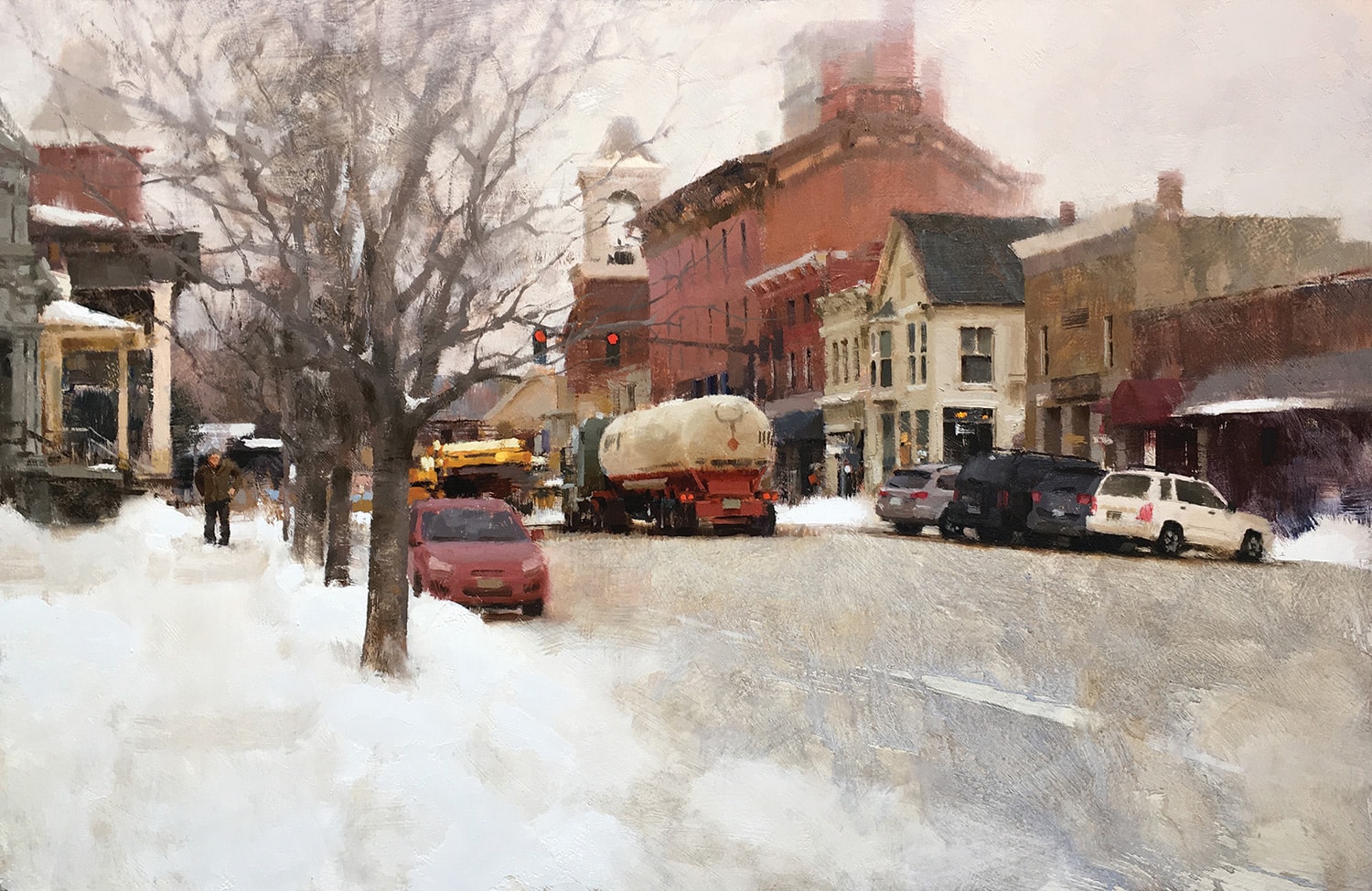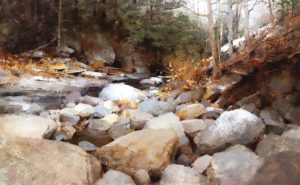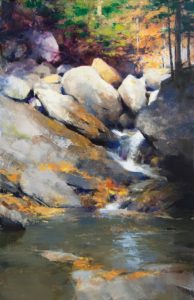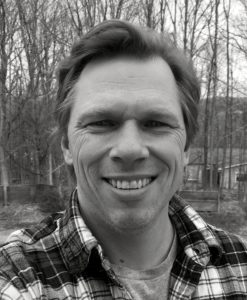
09 May Illuminations: Artist Spotlights
Plein air painter Mark Boedges translates the world we see into a world we can know. With the blurred lines of what is deeply personal and what is widely universal, Boedges creates a call to action for us to experience the cold, muddy banks of a quick, rolling stream or the seemingly unfriendly backyards of our neighbors. For Boedges, it’s all landscape.

“November Harmony” | Oil on Panel | 14 x 22 inches
“Landscape paintings are my passion,” he says. “So artistically that was not a question. I grew up in St. Louis, not exposed to great art, but what they had were the Hudson River School artists [Thomas Cole, Albert Bierstadt, Frederic Edwin Church], the big stuff that really glowed, that really got me going. And Monet, of course, was an early spark. So landscape was an obvious choice.”
It’s also important for his subject to be in front of him. Most of his work is done while standing outside — in the sun, the rain, the cold and the wind — spending from three to five hours on location, depending on the weather. “I’ll snap a few photos while I’m there,” he adds. “So it usually goes like this: Day one, four or five hours outside; day two, four or five hours in the studio with the reference photos. A larger painting usually takes a few more days.”

“Falling Leaves” | Oil on Panel | 12 x 20 inches
He paints wet-on-wet, so he doesn’t want any part of the painting to dry before he’s done with it. If it’s a bigger piece, he’ll work on it incrementally. “I live in Northern Vermont, and we have distinct seasons. I like to capture each season with a unique palette.”
Winter hues are blues and grays, while spring — which can take months to get to the deep green of the back woods — changes his palette in increments.
“I like the distinct changes, and I try to capture that. I roll along with the seasons,” he says, adding, “I like rocky streams, farms and rural architecture. But I’m not out there to recreate a photograph, each painting is meant to be an interpretation of the landscape. The texture on the surface is what sets a painter apart — I want it to be painterly but still real; abstract in the paint — brushwork and palette knife — but real in the overall image.”
For Boedges, standing 8 feet back, the painting should recall the actual location, but as the viewer moves closer to the work, the more abstract it becomes and the brushwork is clearly discerned. “It toggles from abstract to real at a yard back,” he says. “You can see the brushwork, and it doesn’t look like anything, but then it does. It’s a tangle of brushwork from up close. The only way to see the reality is through the abstraction.”
 While Boedges is on location, the only thoughts going through his head are those of light and shadow. But once he’s in his studio, he reflects on the texture, the depth, the layers, as the work begins to become an analog of itself. “There’s a lot of history here, like the old and broken farms, so there’s some thought in how I’m translating those layers onto the canvas. The more complexity I can suggest and yet not paint it directly, the truer it is,” he says.
While Boedges is on location, the only thoughts going through his head are those of light and shadow. But once he’s in his studio, he reflects on the texture, the depth, the layers, as the work begins to become an analog of itself. “There’s a lot of history here, like the old and broken farms, so there’s some thought in how I’m translating those layers onto the canvas. The more complexity I can suggest and yet not paint it directly, the truer it is,” he says.
Boedges is represented by Legacy Gallery in Bozeman, Montana, and Scottsdale, Arizona; Settlers West Galleries in Tucson, Arizona; Robert Paul Galleries in Stowe, Vermont; and Mark Boedges Fine Art Gallery in Shelburne, Vermont.






No Comments